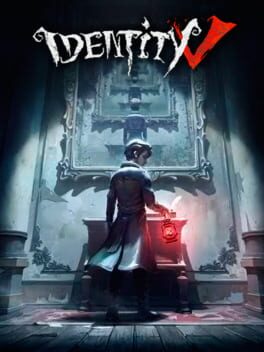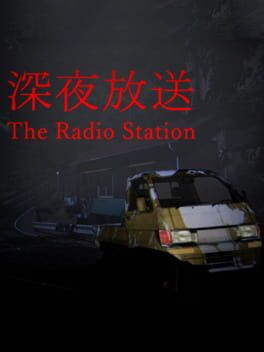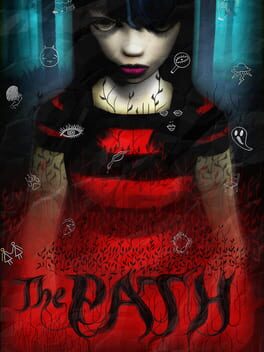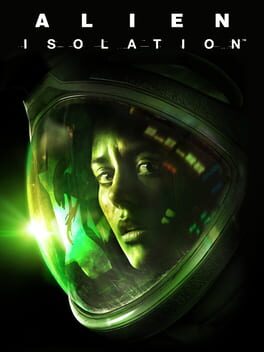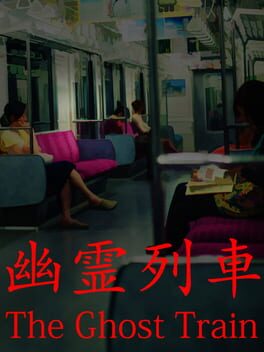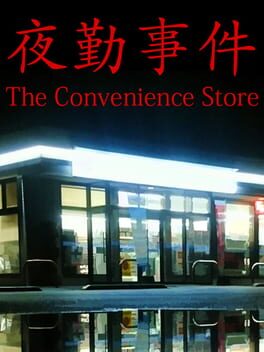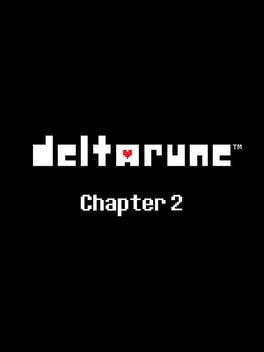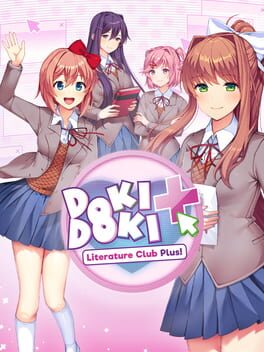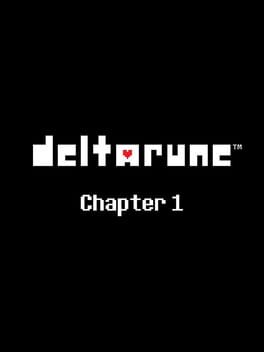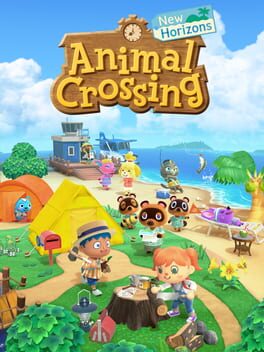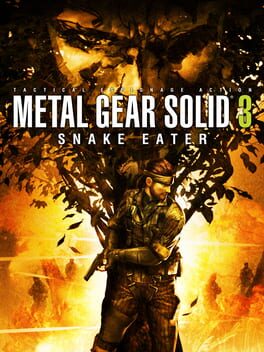princessguard
2018
i embarrassed myself so bad in this game once that i stopped playing for months. a teenager called me a slur post match and another teenager went into detail about their kinlist in global chat. all i have to do is play rank a few times a week to get decent rewards for playing. i love this game and would not recommend it to anyone except people i hate
2021
this feels like a departure from chilla's art's game catalogue.
it's impressive for that alone, but i can't say anything about it scares-wise stuck out to me. i think that if you like the slow build of dread that seems perfected in j-horror, you'll like this one especially. it's a little tongue-in-cheek: you play as a young person investigating the sudden death of their brother, who hosted a radio show where he read ghost stories. the location works and gives the impression of an abandoned town in the mountains, removed from anyone who could help you. chilla's art is a devteam staffed by two brothers, who focus on making horror games. i get the sense they wanted to have a little ghoulish fun with this one. it worked, for the most part: i had fun with it, too.
the most obvious departure from previous games by this dev is that getting around features driving from point A to point B, then back and again. it feels awful by my own standards, but it's not time wasted. they use it for two effective jumpscares.
the less obvious departure is the more abstract progression. when i play a chilla's art game, even though there are multiple endings, it feels very streamlined and natural. my playthroughs never give the impression of sudden, pointless endings or superficial differences. they feel precisely like the ending that playthrough worked toward. in this one, that feeling doesn't quite settle in. i knew immediately that there were other endings. maybe this was intentional, but it was a disappointment for me. this is largely done through how abstract progression is: i got the impression that i was jumping from point A to point D at times, getting ahead of myself and the story. while this openness might be appreciated by others, it mostly left me wondering what in the world i was supposed to be doing.
i did like the ghost stories that masaki told on the tapes. i found that genuinely enjoyable and i wanted to hear more of them; it was marginally disappointing when the #CursedLetter stuff began happening and i was expected to piece together a code. the attempt was nice, but it could maybe be handled in a way that doesn't detract from the experience.
overall, it's fine. in fact, the ambiance, the plotline, and ghoulish tone all worked for me. the issues i had just simply stuck out like a sore thumb. it's not a new favorite and i won't be returning to it if i'm in the mood for a chilla's art game, but i like that they're trying new things on and hope the trend continues.
it's impressive for that alone, but i can't say anything about it scares-wise stuck out to me. i think that if you like the slow build of dread that seems perfected in j-horror, you'll like this one especially. it's a little tongue-in-cheek: you play as a young person investigating the sudden death of their brother, who hosted a radio show where he read ghost stories. the location works and gives the impression of an abandoned town in the mountains, removed from anyone who could help you. chilla's art is a devteam staffed by two brothers, who focus on making horror games. i get the sense they wanted to have a little ghoulish fun with this one. it worked, for the most part: i had fun with it, too.
the most obvious departure from previous games by this dev is that getting around features driving from point A to point B, then back and again. it feels awful by my own standards, but it's not time wasted. they use it for two effective jumpscares.
the less obvious departure is the more abstract progression. when i play a chilla's art game, even though there are multiple endings, it feels very streamlined and natural. my playthroughs never give the impression of sudden, pointless endings or superficial differences. they feel precisely like the ending that playthrough worked toward. in this one, that feeling doesn't quite settle in. i knew immediately that there were other endings. maybe this was intentional, but it was a disappointment for me. this is largely done through how abstract progression is: i got the impression that i was jumping from point A to point D at times, getting ahead of myself and the story. while this openness might be appreciated by others, it mostly left me wondering what in the world i was supposed to be doing.
i did like the ghost stories that masaki told on the tapes. i found that genuinely enjoyable and i wanted to hear more of them; it was marginally disappointing when the #CursedLetter stuff began happening and i was expected to piece together a code. the attempt was nice, but it could maybe be handled in a way that doesn't detract from the experience.
overall, it's fine. in fact, the ambiance, the plotline, and ghoulish tone all worked for me. the issues i had just simply stuck out like a sore thumb. it's not a new favorite and i won't be returning to it if i'm in the mood for a chilla's art game, but i like that they're trying new things on and hope the trend continues.
2009
the path is a video game in which you assume the role of little red riding hood on her way to grandmother's house in the forest. it is a shockingly vibrant game, with an art style rooted in modern pop art and the uncanny valley nature of playstation 2 models, which makes the long trek to grandma's house a blindingly bright experience. it is pure white, ketchup red and vomit green with inspired, whimsical character designs laser-focused on communicating character personality and nothing else. upon reaching your goal, you shuffle uncomfortably through grandma's empty, foreboding house with a sense of unease, and then your character's model settles on the bed next to the corpse-like image of her grandmother, and you get the news. you were ranked with a "failure."
as a walking simulator, the path is equal parts game and art experience. it is a horror tinted vision where the goal is to encourage you to think and relate to the game in your own way. playing the path felt like holding a microscope up to my own recollection of childhood memories, picking out the moments that seemed to echo the path. it is primarily interested in the dissection of childhood and what it feels like to grow up in a world that you're still learning about. each of the little red riding hoods has her own personality, storyline and wolf to encounter in the woods, adding to this feeling of growing up as you play. proceeding from youngest to oldest is a stark experience of growing up from a young girl to a teenager and then burgeoning young woman; it echoed my own life experiences in a haunting way, but perhaps it wouldn't be as such for every other person out there.
decorated with a unique artstyle that indulges in the doll-like appearance of ps2 models, the path also sounds lovely with an ambience that has not be replicated in games since it. it is handcrafted to feel like a fairytale that is held together with wire, drapes and shadows, never quite revealing what it's end game is until you decide you've had enough and want to digest it on your own. it has a vested interest in leading you through an emotionally uncomfortable experience, allowing each player to have a unique take on what they interpreted the game to be about. the closest thing to it is looking at a painting and talking to other people about it: everyone notices and feels something different, so robust conversation that gives you peeks into one another as human beings feels like a component that has been baked into the path.
it is a bug-laden mess that is a pain and a half to get running these days, and when you get it to, there's still hoops to jump through. still, getting it to play feels like hitting a coffin after digging into the earth for hours. it feels like a skeleton you shouldn't be looking at, like the past is haunting you as you play.
it's worth noting that there is simply no user interface to this game. in fact, it probably is one of the earliest examples of a modern game completely forgoing a UI to hammer in the experience of it's stage. it expects you to learn to walk on your own, taking the game at your own pace and exploring as you wish, alongside the red riding hood of your choice. in this day and age, this doesn't quite achieve the effect it did almost fifteen years ago, but i'm sure that it added to the sense of disorientation back then. it just felt like something worth mentioning: there are multiple instances where things feel dated. the intuitive ui is one example, but the writing can be another. overwrought at times with a desperate need to sound like a page out of a fairytale, it can miss the mark when it really cannot afford to.
i don't think this is a game for everyone and i would hesitate to recommend it even to close friends. if you like stuff like night in the woods or what remains of edith finch, this #ArtGame might be for you. it's a masterclass in atmosphere, topped with some of the most uncomfortable gaming experiences i've ever had that were completely on purpose. the path is also arguably the best of tale of tales' gaming catalogue, and the development team's thumbprint is still pressed into the silicon form of gaming today.
as a walking simulator, the path is equal parts game and art experience. it is a horror tinted vision where the goal is to encourage you to think and relate to the game in your own way. playing the path felt like holding a microscope up to my own recollection of childhood memories, picking out the moments that seemed to echo the path. it is primarily interested in the dissection of childhood and what it feels like to grow up in a world that you're still learning about. each of the little red riding hoods has her own personality, storyline and wolf to encounter in the woods, adding to this feeling of growing up as you play. proceeding from youngest to oldest is a stark experience of growing up from a young girl to a teenager and then burgeoning young woman; it echoed my own life experiences in a haunting way, but perhaps it wouldn't be as such for every other person out there.
decorated with a unique artstyle that indulges in the doll-like appearance of ps2 models, the path also sounds lovely with an ambience that has not be replicated in games since it. it is handcrafted to feel like a fairytale that is held together with wire, drapes and shadows, never quite revealing what it's end game is until you decide you've had enough and want to digest it on your own. it has a vested interest in leading you through an emotionally uncomfortable experience, allowing each player to have a unique take on what they interpreted the game to be about. the closest thing to it is looking at a painting and talking to other people about it: everyone notices and feels something different, so robust conversation that gives you peeks into one another as human beings feels like a component that has been baked into the path.
it is a bug-laden mess that is a pain and a half to get running these days, and when you get it to, there's still hoops to jump through. still, getting it to play feels like hitting a coffin after digging into the earth for hours. it feels like a skeleton you shouldn't be looking at, like the past is haunting you as you play.
it's worth noting that there is simply no user interface to this game. in fact, it probably is one of the earliest examples of a modern game completely forgoing a UI to hammer in the experience of it's stage. it expects you to learn to walk on your own, taking the game at your own pace and exploring as you wish, alongside the red riding hood of your choice. in this day and age, this doesn't quite achieve the effect it did almost fifteen years ago, but i'm sure that it added to the sense of disorientation back then. it just felt like something worth mentioning: there are multiple instances where things feel dated. the intuitive ui is one example, but the writing can be another. overwrought at times with a desperate need to sound like a page out of a fairytale, it can miss the mark when it really cannot afford to.
i don't think this is a game for everyone and i would hesitate to recommend it even to close friends. if you like stuff like night in the woods or what remains of edith finch, this #ArtGame might be for you. it's a masterclass in atmosphere, topped with some of the most uncomfortable gaming experiences i've ever had that were completely on purpose. the path is also arguably the best of tale of tales' gaming catalogue, and the development team's thumbprint is still pressed into the silicon form of gaming today.
2014
2015
it's a clunky mess with a confusing storyline that requires exploration and time, but i truly do love the soundtrack and atmosphere. stroboskop is a one man developer who clearly has a passion for the human aspect of hauntings, and a sense of loneliness permeates sylvio, and it feels like a nail trailing down your spine. i never quite feel completely alone in the world when i open this one, but i know i'm the only person there.
that said the ending beefs it in a way where i'm still trying to grapple with the game over five years later
that said the ending beefs it in a way where i'm still trying to grapple with the game over five years later
2020
the first half of this game conducts it's atmosphere with a deft hand, managing to hit a shockingly good crescendo at it's climax. it's hardly a surprise when it fumbles it, losing steam and turning the game into a tedious sort of "hot spot hunt", where standing in places will trigger a new scare for you to jump at. it certainly over stays it's welcome, and i found the scares near the end more than a little cheap, but it's a fun indie romp and probably a blast to play with your friend who gets a little more scared than you do.
2019
2021
2021
it's fine. i played the base game years ago on PC and find that the attempt at technological scares is mostly diminished on switch. the atmosphere has shifted as such, and any tension from the previous "errors" is pretty much gone by the time the text scrolls again.
the new content is side stories and new 'lore', presented as new files on the virtual machine DDLC runs on in your console. the side stories are of surprisingly good quality, allowing for each of the girls' personalities to shine enough that you realize what their strengths and weaknesses are. the new lore is confusing at best and pointless at worse; chunks of it are already things people knew or suspected, but i guess it's nice to have it be canonical within the DDLC timeline.
my primary issue with DDLC is it's use of suicide and mental illness as shock value. i can't say it doesn't take the topics seriously, though, so perhaps it's best described as clumsy commentary on the stigma that continues to affect mentally ill people in society. i did find the depictions of anxiety and depression to be extremely fair in the side stories, although pretty twee at times, and the base game focuses on a character's psychotic breakdown. the latter of these things i always actually found far more relatable than media that goes out of it's way to depict it. on some level, it's hard to critique this aspect of the game without mentioning that the demonization and shock value the characters go through is intentional, and something you're likely supposed to feel bad and weird about. it doesn't entirely feel like intentional or deserved commentary, however, even if i do appreciate the attempt at it. at no point did it feel like a bad faith take, merely one that was hot potato'd.
despite what i said here, though, i do love this little romp, and monika is one of my favorite characters of all time. i can only really recommend DDLCPlus to people like me, who still enjoy DDLC after all this time. if you're new, i don't think that the switch version is for you. the psychological horror of a game crashing your PC just doesn't come across on the switch.
ultimately, i'd say this is mostly a collector's item for people like me, who already love the game and were just excited to see it in physical form finally.
the new content is side stories and new 'lore', presented as new files on the virtual machine DDLC runs on in your console. the side stories are of surprisingly good quality, allowing for each of the girls' personalities to shine enough that you realize what their strengths and weaknesses are. the new lore is confusing at best and pointless at worse; chunks of it are already things people knew or suspected, but i guess it's nice to have it be canonical within the DDLC timeline.
my primary issue with DDLC is it's use of suicide and mental illness as shock value. i can't say it doesn't take the topics seriously, though, so perhaps it's best described as clumsy commentary on the stigma that continues to affect mentally ill people in society. i did find the depictions of anxiety and depression to be extremely fair in the side stories, although pretty twee at times, and the base game focuses on a character's psychotic breakdown. the latter of these things i always actually found far more relatable than media that goes out of it's way to depict it. on some level, it's hard to critique this aspect of the game without mentioning that the demonization and shock value the characters go through is intentional, and something you're likely supposed to feel bad and weird about. it doesn't entirely feel like intentional or deserved commentary, however, even if i do appreciate the attempt at it. at no point did it feel like a bad faith take, merely one that was hot potato'd.
despite what i said here, though, i do love this little romp, and monika is one of my favorite characters of all time. i can only really recommend DDLCPlus to people like me, who still enjoy DDLC after all this time. if you're new, i don't think that the switch version is for you. the psychological horror of a game crashing your PC just doesn't come across on the switch.
ultimately, i'd say this is mostly a collector's item for people like me, who already love the game and were just excited to see it in physical form finally.
2018
played this originally on pc and recently got it on switch to play through it again. it's a fun, solid demo that promises a lot in the future, but it feels very much like a monster of the week formula. deltarune reminds me of a magical girl anime from the 90s thus far, but that's not a complaint in the slightest. i grew up on sailor moon and cardcaptor sakura.
that said, the biggest frustration i had with revisiting it on switch is that it lags, stutters and overall has some performance issues. i'm not sure what causes them, because my nintendo switch isn't hurting for space, and both the dynamic and simple backgrounds have this issue. so far, it hasn't been a problem for battles, so perhaps there's a lot of assets loading in the overworld as you play? i really couldn't tell you. i would recommend playing this on pc over switch, just to safe. if this is fixed any time soon, i'll surely mention it.
pros
- lancer is shaped like a friend
- susie is a surprisingly compelling character with shockingly good development for a 5 to 10 hour chapter
- overall, the character writing is just fun
- the battle system is a marked improvement and the party system allows for more of the aforementioned fun character writing, which means i look forward to the bullet hell stuff more than i did in undertale
- the lore's easy to digest and theorize about which is fun
- it has a lot of heart in it and even when i wasn't particularly enjoying how the game felt, i was able to find something i enjoyed because of that feeling
cons
- it lags and stutters on switch
- upset i can't squish lancer
- ralsei is Cute On Purpose. i actually love ralsei so you'd think this is a pro but it's a con because i hate being told what to do and how to feel about a character but i guess that's kind of the point, also, or whatever
- i can SMELL the homestuck on this one. it REEKS of homestuck
excellent
- i like how if you flush the toilet over and over toriel gets mad at kris and says that if they put a bath bomb in the toilet again theyre in trouble. im going to go put a bath bomb in the toilet rn
that said, the biggest frustration i had with revisiting it on switch is that it lags, stutters and overall has some performance issues. i'm not sure what causes them, because my nintendo switch isn't hurting for space, and both the dynamic and simple backgrounds have this issue. so far, it hasn't been a problem for battles, so perhaps there's a lot of assets loading in the overworld as you play? i really couldn't tell you. i would recommend playing this on pc over switch, just to safe. if this is fixed any time soon, i'll surely mention it.
pros
- lancer is shaped like a friend
- susie is a surprisingly compelling character with shockingly good development for a 5 to 10 hour chapter
- overall, the character writing is just fun
- the battle system is a marked improvement and the party system allows for more of the aforementioned fun character writing, which means i look forward to the bullet hell stuff more than i did in undertale
- the lore's easy to digest and theorize about which is fun
- it has a lot of heart in it and even when i wasn't particularly enjoying how the game felt, i was able to find something i enjoyed because of that feeling
cons
- it lags and stutters on switch
- upset i can't squish lancer
- ralsei is Cute On Purpose. i actually love ralsei so you'd think this is a pro but it's a con because i hate being told what to do and how to feel about a character but i guess that's kind of the point, also, or whatever
- i can SMELL the homestuck on this one. it REEKS of homestuck
excellent
- i like how if you flush the toilet over and over toriel gets mad at kris and says that if they put a bath bomb in the toilet again theyre in trouble. im going to go put a bath bomb in the toilet rn
edited 1/30/22
Covid-19 is intrinsic to Animal Crossing: New Horizon's profile. I have a lot of games I played during this scary time in our lives, but it's AC: NH that defines it; merely days after it dropped, my state went into lockdown. At that point, my family and I were quarantined to try and remain safe in the hopes of weathering out the pandemic. When I think back to those first few months of lockdown, I think of how much of a comfort waking up to play on my island was. I would play for quite literally hours at a time, though I only recently clocked in with nearly 400 hours of gameplay.
All that said, I don't think that this was a game meant to be played for an upwards of 400 hours in less than two years. That might not seem like a lot, but the majority of my playtime these days is firmly settled on maybe an hour a day— when I remember to play, that is.
This game is often, understandably, compared to AC: New Leaf. There's an important piece of that discussion that I feel is often ignored: NL introduced the Dream Suite, which allowed players to create a dream address for their towns they could then share online. This let other players visit their towns without the mayor needing to allow them entry. It essentially was like exploring a cloud backup of a town, and some players got extremely creative with this, giving their towns themes and stories for dream visitors to uncover as they explored. An example of this would be the infamous Aika village. Additionally, the Able sisters' shop had a machine in it where players could make custom designs that they could upload to the internet. Other players could then download it through an assigned QR code that would be punched into the same machine in their game. Players could use this design to customize their town or their character. The 3DS’' touch screen changed the landscape for customization in Animal Crossing. While there was a lot to do in NL, the customization aspect was probably what I most remember and arguably what kept NL puttering along until the big "Welcome Amiibo" update. I think NH is the continuation of that, with perhaps the biggest proof being how quickly Luna was introduced into the game. However, in order to focus on aesthetics, the game has been stripped down to the bare essentials, with Nintendo arguably putting out an incomplete game.
This is a YMMV thing, I suppose. I see people creating in depth, stunning islands, and my immediate first thought when I spot them is that I am frankly not playing the same game as them. In the hands of someone with more creativity than me, I can see how this game could be a personal favorite. Most of the focus has been shifted to online play, trading, and island customization. I've seen "playable islands," which is stuff like island wide mazes, something that Nintendo has gotten in on themselves.
One of the biggest reveals leading up to the release of New Horizons was that your island was fully customizable. You could create your own cliffs, rivers, waterfalls, and there were a number of different customization options for bridges and inclines. DIY’d furniture could be customized, refreshed with a new coat of paint in the absence of Reese and Cyrus’ shop. These two factors, combined with how fast Luna was implemented, seem to indicate that aesthetics were the driving force of development in New Horizons. This would be fine, except there’s a number of problems that become even more strained and obvious the longer they go unaddressed.
Firstly, I would be remiss to not mention Nook Miles. A new addition to Animal Crossing, Nook Miles are a new in-game currency that you could use to purchase different items through a curated catalogue hosted by Nook Industries. You can purchase items, DIYs and Nook Mile Tickets with Nook Miles, but all of these come with a caveat. This title, more than previous titles, has had it’s online play stressed again and again for better or worse. In your Nook Miles shop, you’ll find a street light. Mine is brown, personally, but yours might be a different color; white, maybe. You will only be able to purchase that color from your Nook Miles shop— if either of us ever want a different color street lamp, we will need to get it from a second party every single time we want one. This is the same for any item for sale on the NM shop: Trading is a necessity if you want to focus on the aesthetic of your island, something that is encouraged by the game’s design.
Design surrounding customization and aesthetic in this game seem to be carefully chosen to encourage players to, well, play. Seasonal DIYs drop from balloons. You can only get certain DIYs from completing tasks— if you want the Mermaid series back, you need to hunt for scallops in the Summer so Pascal can pop up and ask you to trade your new scallop for a DIY. Talking to villagers during October can net you some Spooky DIYs. If you notice I keep mentioning DIYs, it’s because New Horizons launched with a limited selection of furniture. The Rococo line is gone, as are a number of others. They could be reintroduced at a later date, but I have to wonder if it’s too little at this point. There are new furniture sets in New Horizons, however: The wedding furniture can only be obtained by engaging in a seasonal daily minigame that loses all its charm the longer you play. The Sanrio furniture line was locked to Amiibo cards that sold out immediately, so your only hope is trading for the items, or buying knock offs of the cards online. Both options technically cost real world money— you need an online membership to trade, after all. I’ve already paid for the game, so tacking on $5 inclements to get more furniture to decorate my island when that’s what was promoted feels… well, not very consumer friendly.
With the mention of real world money and the previous mention of Nook Miles, you might be wondering how strong the similarity between a mobile Animal Crossing and New Horizons is. In talking about New Horizons, I can’t not also talk about Pocket Camp, the mobile version of Animal Crossing that comically enough has more content in it than New Horizons presently does. Part of this is the paywall— you purchase items to decorate your campsite with, but there’s also more fruit to collect in Pocket Camp, more incentive to catch fish and bugs in order to work up to those F2P options. More crossovers, collabs, more promotions; the list is exhaustive. New Horizons, in comparison, feels bare. Comparing the two feels dirty, because a mobile game functions and plans differently from a console game. When I need to pay extra money monthly to fully experience the game as intended, though, I have to wonder if New Horizons is all that different. If you’re still wondering: I wouldn’t say New Horizons has much in common with Pocket Camp beyond Nintendo’s clear greed and anti-consumer fundamentals, but this isn’t new to Nintendo. It’s simply more frustrating to see laid out in plain text.
One of the biggest misses in New Horizons is just how little time it actually spends getting you to play. There’s a severe lack of minigames, and significantly less traveling visitors to your island. Katrina is missing, and famously Brewster, but Kapp’n is nowhere to be seen either, even though there’s a dock on the beach. All three of these NPCs are associated with minigames or game mechanics, which New Horizons desperately needs. For what it’s worth, datamines consistently show that Brewster is slowly being implemented, and Katrina has been spotted on the Nintendo Online app. The dock has been in game from launch. With any luck, at least this trio might be seen in forthcoming updates, but for now, New Horizons is mostly menus and text.
Speaking of text, you read a lot of it in New Horizons.
In fact, I wouldn’t be surprised if a not-insignificant amount of my time in the game is spent doing just that simply due to menus. Since launch, a vocal part of the playerbase has been asking Nintendo to work on bulk crafting options simply because players will often do just that: craft in bulk. As an example, a recommended strategy for the fish and bug tournaments is to craft a multitude of fishing poles and nets beforehand. You go through the same set of menus every time you craft anything, and I can’t imagine that the development team did not expect players to craft in bulk at some point in designing the game— but the crafting menus are not nearly as bad as Orville’s menus. If you want to fly to another island, you’ll need to run down to the airport and talk to Orville, which kicks up a comical amount of menus. Menus lead to menus lead to menus in New Horizons. I couldn’t tell you why. I don’t know if villager hunting was a strategy the devteam planned on players engaging with, but they surely expected us to go to Mystery Islands back to back, right? I’m no longer hurting for resources in New Horizons. I don’t need more fruit or flowers or weeds or trees, so my only reason to go to these islands is to get a lucky roll or find a new villager. In the latter case, I spend much less time on the Mystery Island than in the menus upon menus. It’s odd.
Odd choices are a bound in New Horizons— updates are a Problem depending on who you talk to, but I find a lot of odd decisions are made within them. The aforementioned Nook Miles can also be obtained by visiting the terminal within Resident Services, which is fine because prior to an update where the terminal could now be accessed through your in-game phone, you could only check your new daily set of items for sale by visiting it. Now, you have to walk into the Resident Services, open the menu to get the Nook Miles, and if you’re like me, you already checked the shop, so you just leave.
Another odd decision is that the game functions on a grid. Basically, each part of your island is designed in squares. This means that some items will never be centered, and it makes terraforming— again, one of the Big Promotional Things— a bigger chore than you expect. I understand it fundamentally, but it feels like a midway point where something just doesn’t quite fit. It’s almost there, but it feels clunky and difficult more often than not. Maybe I’m just not good at it.
Additionally, while you can have multiple characters on the island, you can only have one island per console. This is an odd choice for a game where the demographic seems to be families; my younger siblings should be allowed to have their own islands on my Switch. For a game so focused on customization, I don't see why I can't have multiple islands or save datas. Then again, you have to purchase a memory card for your switch in order to have more than a handful of games on it, so perhaps it is simply a memory issue. Regardless, it is a feature I feel is necessary for games like this.
I’ve seen a lot of conversation surrounding the repetitive dialogue in the game, and I will be frank: There is a lot of it. Villagers repeat things, there’s a fair few glitches like villagers “blue screening” and we all had to put up with Raymond in a maid dress. That said, I can’t say it’s better or even worse than New Leaf. I booted up New Leaf because I remembered it very fondly, but after playing around in it for a while, I realized I had run into the same dialogue with my villagers a few times. In my experience, they’re just as lacking as before, but the bare bones gameplay has resulted in this being even more prominent than before. One thing I do miss is being invited over to villager houses at certain times and days, but missing that had no consequence in New Leaf. To be honest, I kind of miss the mean villagers from the Gamecube game. Go figure, right? I want the stress-free game to be more stressful.
This is a lot of text, and you might think I hate New Horizons. To be honest, though, I really don’t I didn’t sink 400 hours of my time into it because I had nothing to do. I got bored of it and moved onto other games: I’ve only played New Horizons in the Spring and Summer, because that’s when I get the Animal Crossing Itch. When I get back to the game, I do spend hours in it. The customization aspect of the game does hit certain points for me, and I have worked a lot on my island. My house is paid off, and nearly all decorated. I don’t open up the game out of spite— I legitimately enjoy it for a half hour or so, and then I’m done. That’s probably the intention of this game, now, but I can’t help but think about how I wish I had more to do in it. How the implication of more is in every corner of my island getaway.
The closed off upper level of Nook’s Cranny, the two empty walls on either side of the top level of the museum, the dock where Kapp’n could park his boat and wait for me to hop on in. The secret beach was eventually revealed to be where Redd docks his boat, and there’s still areas on my island where another building or two could fit. It’s like New Horizons has potential, but it doesn’t know when or how to unlock it. Maybe the problem is me though— maybe I’m looking for something exciting in my getaway package now that it’s started to feel like real life: Trapped in the same routine with no way out, doing my silly little tasks, while I hope for something to shake it up.
Anyway I think New Horizons is not a very good game
ETA: my opinion of 2.0 is reflected in how i took away half a star for it
Covid-19 is intrinsic to Animal Crossing: New Horizon's profile. I have a lot of games I played during this scary time in our lives, but it's AC: NH that defines it; merely days after it dropped, my state went into lockdown. At that point, my family and I were quarantined to try and remain safe in the hopes of weathering out the pandemic. When I think back to those first few months of lockdown, I think of how much of a comfort waking up to play on my island was. I would play for quite literally hours at a time, though I only recently clocked in with nearly 400 hours of gameplay.
All that said, I don't think that this was a game meant to be played for an upwards of 400 hours in less than two years. That might not seem like a lot, but the majority of my playtime these days is firmly settled on maybe an hour a day— when I remember to play, that is.
This game is often, understandably, compared to AC: New Leaf. There's an important piece of that discussion that I feel is often ignored: NL introduced the Dream Suite, which allowed players to create a dream address for their towns they could then share online. This let other players visit their towns without the mayor needing to allow them entry. It essentially was like exploring a cloud backup of a town, and some players got extremely creative with this, giving their towns themes and stories for dream visitors to uncover as they explored. An example of this would be the infamous Aika village. Additionally, the Able sisters' shop had a machine in it where players could make custom designs that they could upload to the internet. Other players could then download it through an assigned QR code that would be punched into the same machine in their game. Players could use this design to customize their town or their character. The 3DS’' touch screen changed the landscape for customization in Animal Crossing. While there was a lot to do in NL, the customization aspect was probably what I most remember and arguably what kept NL puttering along until the big "Welcome Amiibo" update. I think NH is the continuation of that, with perhaps the biggest proof being how quickly Luna was introduced into the game. However, in order to focus on aesthetics, the game has been stripped down to the bare essentials, with Nintendo arguably putting out an incomplete game.
This is a YMMV thing, I suppose. I see people creating in depth, stunning islands, and my immediate first thought when I spot them is that I am frankly not playing the same game as them. In the hands of someone with more creativity than me, I can see how this game could be a personal favorite. Most of the focus has been shifted to online play, trading, and island customization. I've seen "playable islands," which is stuff like island wide mazes, something that Nintendo has gotten in on themselves.
One of the biggest reveals leading up to the release of New Horizons was that your island was fully customizable. You could create your own cliffs, rivers, waterfalls, and there were a number of different customization options for bridges and inclines. DIY’d furniture could be customized, refreshed with a new coat of paint in the absence of Reese and Cyrus’ shop. These two factors, combined with how fast Luna was implemented, seem to indicate that aesthetics were the driving force of development in New Horizons. This would be fine, except there’s a number of problems that become even more strained and obvious the longer they go unaddressed.
Firstly, I would be remiss to not mention Nook Miles. A new addition to Animal Crossing, Nook Miles are a new in-game currency that you could use to purchase different items through a curated catalogue hosted by Nook Industries. You can purchase items, DIYs and Nook Mile Tickets with Nook Miles, but all of these come with a caveat. This title, more than previous titles, has had it’s online play stressed again and again for better or worse. In your Nook Miles shop, you’ll find a street light. Mine is brown, personally, but yours might be a different color; white, maybe. You will only be able to purchase that color from your Nook Miles shop— if either of us ever want a different color street lamp, we will need to get it from a second party every single time we want one. This is the same for any item for sale on the NM shop: Trading is a necessity if you want to focus on the aesthetic of your island, something that is encouraged by the game’s design.
Design surrounding customization and aesthetic in this game seem to be carefully chosen to encourage players to, well, play. Seasonal DIYs drop from balloons. You can only get certain DIYs from completing tasks— if you want the Mermaid series back, you need to hunt for scallops in the Summer so Pascal can pop up and ask you to trade your new scallop for a DIY. Talking to villagers during October can net you some Spooky DIYs. If you notice I keep mentioning DIYs, it’s because New Horizons launched with a limited selection of furniture. The Rococo line is gone, as are a number of others. They could be reintroduced at a later date, but I have to wonder if it’s too little at this point. There are new furniture sets in New Horizons, however: The wedding furniture can only be obtained by engaging in a seasonal daily minigame that loses all its charm the longer you play. The Sanrio furniture line was locked to Amiibo cards that sold out immediately, so your only hope is trading for the items, or buying knock offs of the cards online. Both options technically cost real world money— you need an online membership to trade, after all. I’ve already paid for the game, so tacking on $5 inclements to get more furniture to decorate my island when that’s what was promoted feels… well, not very consumer friendly.
With the mention of real world money and the previous mention of Nook Miles, you might be wondering how strong the similarity between a mobile Animal Crossing and New Horizons is. In talking about New Horizons, I can’t not also talk about Pocket Camp, the mobile version of Animal Crossing that comically enough has more content in it than New Horizons presently does. Part of this is the paywall— you purchase items to decorate your campsite with, but there’s also more fruit to collect in Pocket Camp, more incentive to catch fish and bugs in order to work up to those F2P options. More crossovers, collabs, more promotions; the list is exhaustive. New Horizons, in comparison, feels bare. Comparing the two feels dirty, because a mobile game functions and plans differently from a console game. When I need to pay extra money monthly to fully experience the game as intended, though, I have to wonder if New Horizons is all that different. If you’re still wondering: I wouldn’t say New Horizons has much in common with Pocket Camp beyond Nintendo’s clear greed and anti-consumer fundamentals, but this isn’t new to Nintendo. It’s simply more frustrating to see laid out in plain text.
One of the biggest misses in New Horizons is just how little time it actually spends getting you to play. There’s a severe lack of minigames, and significantly less traveling visitors to your island. Katrina is missing, and famously Brewster, but Kapp’n is nowhere to be seen either, even though there’s a dock on the beach. All three of these NPCs are associated with minigames or game mechanics, which New Horizons desperately needs. For what it’s worth, datamines consistently show that Brewster is slowly being implemented, and Katrina has been spotted on the Nintendo Online app. The dock has been in game from launch. With any luck, at least this trio might be seen in forthcoming updates, but for now, New Horizons is mostly menus and text.
Speaking of text, you read a lot of it in New Horizons.
In fact, I wouldn’t be surprised if a not-insignificant amount of my time in the game is spent doing just that simply due to menus. Since launch, a vocal part of the playerbase has been asking Nintendo to work on bulk crafting options simply because players will often do just that: craft in bulk. As an example, a recommended strategy for the fish and bug tournaments is to craft a multitude of fishing poles and nets beforehand. You go through the same set of menus every time you craft anything, and I can’t imagine that the development team did not expect players to craft in bulk at some point in designing the game— but the crafting menus are not nearly as bad as Orville’s menus. If you want to fly to another island, you’ll need to run down to the airport and talk to Orville, which kicks up a comical amount of menus. Menus lead to menus lead to menus in New Horizons. I couldn’t tell you why. I don’t know if villager hunting was a strategy the devteam planned on players engaging with, but they surely expected us to go to Mystery Islands back to back, right? I’m no longer hurting for resources in New Horizons. I don’t need more fruit or flowers or weeds or trees, so my only reason to go to these islands is to get a lucky roll or find a new villager. In the latter case, I spend much less time on the Mystery Island than in the menus upon menus. It’s odd.
Odd choices are a bound in New Horizons— updates are a Problem depending on who you talk to, but I find a lot of odd decisions are made within them. The aforementioned Nook Miles can also be obtained by visiting the terminal within Resident Services, which is fine because prior to an update where the terminal could now be accessed through your in-game phone, you could only check your new daily set of items for sale by visiting it. Now, you have to walk into the Resident Services, open the menu to get the Nook Miles, and if you’re like me, you already checked the shop, so you just leave.
Another odd decision is that the game functions on a grid. Basically, each part of your island is designed in squares. This means that some items will never be centered, and it makes terraforming— again, one of the Big Promotional Things— a bigger chore than you expect. I understand it fundamentally, but it feels like a midway point where something just doesn’t quite fit. It’s almost there, but it feels clunky and difficult more often than not. Maybe I’m just not good at it.
Additionally, while you can have multiple characters on the island, you can only have one island per console. This is an odd choice for a game where the demographic seems to be families; my younger siblings should be allowed to have their own islands on my Switch. For a game so focused on customization, I don't see why I can't have multiple islands or save datas. Then again, you have to purchase a memory card for your switch in order to have more than a handful of games on it, so perhaps it is simply a memory issue. Regardless, it is a feature I feel is necessary for games like this.
I’ve seen a lot of conversation surrounding the repetitive dialogue in the game, and I will be frank: There is a lot of it. Villagers repeat things, there’s a fair few glitches like villagers “blue screening” and we all had to put up with Raymond in a maid dress. That said, I can’t say it’s better or even worse than New Leaf. I booted up New Leaf because I remembered it very fondly, but after playing around in it for a while, I realized I had run into the same dialogue with my villagers a few times. In my experience, they’re just as lacking as before, but the bare bones gameplay has resulted in this being even more prominent than before. One thing I do miss is being invited over to villager houses at certain times and days, but missing that had no consequence in New Leaf. To be honest, I kind of miss the mean villagers from the Gamecube game. Go figure, right? I want the stress-free game to be more stressful.
This is a lot of text, and you might think I hate New Horizons. To be honest, though, I really don’t I didn’t sink 400 hours of my time into it because I had nothing to do. I got bored of it and moved onto other games: I’ve only played New Horizons in the Spring and Summer, because that’s when I get the Animal Crossing Itch. When I get back to the game, I do spend hours in it. The customization aspect of the game does hit certain points for me, and I have worked a lot on my island. My house is paid off, and nearly all decorated. I don’t open up the game out of spite— I legitimately enjoy it for a half hour or so, and then I’m done. That’s probably the intention of this game, now, but I can’t help but think about how I wish I had more to do in it. How the implication of more is in every corner of my island getaway.
The closed off upper level of Nook’s Cranny, the two empty walls on either side of the top level of the museum, the dock where Kapp’n could park his boat and wait for me to hop on in. The secret beach was eventually revealed to be where Redd docks his boat, and there’s still areas on my island where another building or two could fit. It’s like New Horizons has potential, but it doesn’t know when or how to unlock it. Maybe the problem is me though— maybe I’m looking for something exciting in my getaway package now that it’s started to feel like real life: Trapped in the same routine with no way out, doing my silly little tasks, while I hope for something to shake it up.
Anyway I think New Horizons is not a very good game
ETA: my opinion of 2.0 is reflected in how i took away half a star for it
if you only want to touch one game in the metal gear franchise, make it mgs3. it may not be my favorite of the series, but it is the game that perfects metal gear. gameplay, story and kojipro's love for movies hit a operatic and harmonic crescendo in mgs3 that i've struggled to see replicated in any game since, though many have certainly tried. cinematic gaming is it's own sort of genre for better or worse, and the bones of mgs3 can be seen in every entry in it since. it's a unique experience that deserves it's position in gaming history as a benchmark.
also naked snake can find and eat tsuchinoko, a legendary yokai in japanese folklore in the form of a snake, which slaps i think
also naked snake can find and eat tsuchinoko, a legendary yokai in japanese folklore in the form of a snake, which slaps i think
my favorite part of this game is when a vampire voiced by grim from the grim adventures of billy and mandy just comes back to life without any explanation, followed closely by when a twunk with a sword he has no training with defeats doc oct on the roof of nyc's federal hall in order to keep the internet free
